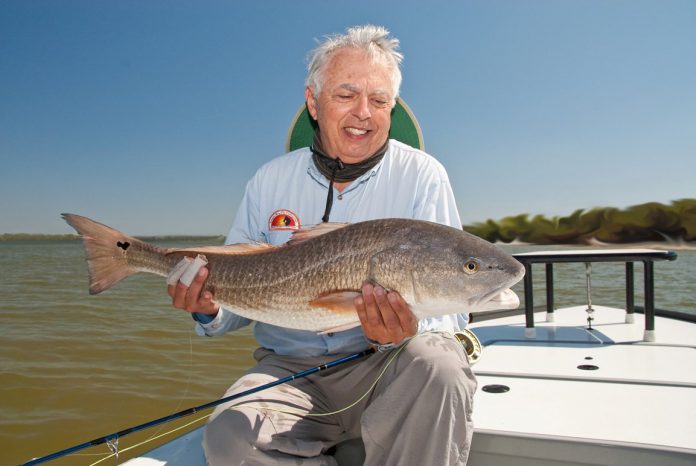The Tampa Bay Times
Coldwater temperature and fish that prefer warm conditions are a tough combination for fly fishers. Small baitfish, primarily glass minnows, will be in canals and well-protected areas, especially where the sun can warm the darker bottom. This means an early start even with a moving tide will usually not be very productive. Seawalls, a wooden structure such as docks, and boats with large wood hulls absorb heat, inviting fish to stay close. A water thermometer is a necessity. If your boat is not equipped with one, get an inexpensive pool thermometer. A few degrees will make a big difference. Seek the warmest places. Cold-blooded fish will be lethargic and not anxious to chase a fly. On the shallow grass flats, fish will be in sand holes, improving sight-fishing opportunities. These will show as a light-colored bottom devoid of grass. Probe these with well-placed casts allowing your fly to sink to the bottom before starting a slow retrieve. A large sand hole should be fished carefully especially if few are present. A smooth surface with no wind might help fly casting, but larger fish will spook easier. A ripple on the surface will get you closer to fish. Fish on the windward side rather than in the lee because the wind pushes plankton close to shore and available baitfish will be there feeding. Schools of mullet are always a guide to where trout and reds will feel more comfortable relaxing their guard.
Fly fisherman Pat Damico charters Fly Guy in lower Tampa Bay and can be reached at captpatdamico.com and (727) 504-8649.
- Capiains Corner. Damico - December 26, 2023
- Pat Damico - December 21, 2023
- CaptainsCorner: Pat Damico - November 27, 2023











